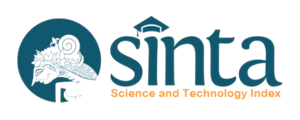Code Switching in the Instructions of English Language Education Study Program Lecturers
(1) Sanata Dharma University, Yogyakarta
(2) Sanata Dharma University, Yogyakarta
(*) Corresponding Author
Abstract
Keywords
Full Text:
PDFReferences
Ahmad, B.H. (2009). Teachers code-switching in classroom instructions for low English proficient learners. The CCSE Internet Journal.
Adegbite, F., & Akindele, W. (1999). The sociology and politics of English in Nigeria: An introduction. Retrieved May 28, 2015, from http://www.getitwriteonline.com/archive/020204whencommabfand.htm.
Ary, D., Jacobs, L.C., Sorensen, C., & Razavieh, A. (2010). An introduction to research in education. Belmont: Wadsworth.
Blom, J.-P., & Gumperz, J. J. (1972). Social meaning in linguistic structures: codeswitching
in Norway. In John J. Gumperz, Dell Hymes (eds.) Directions in sociolinguistics: The ethnography of communication. New York: Holt, Rinehart and Winston Inc.
Creswell, J. (2009). Research design: Qualitative, quantitative and mixed methods
approaches. Los Angeles: SAGE Publications Inc.
Gal, S. (1988). The political economy of code choice. In M. Heller,(ed.), Codeswitching: Anthropological and sociolinguistic perspectives, 48, 245-64.
Harmer, J. (2007). The practice of English language teaching. Cambridge: Longman.
Hoffman, C. (1991). An introduction to bilingualism. London: Longman.
Holmes, J. (1992). An introduction to sociolinguistics. London: Longman.
Modupeola, O. R. (2013). Code-Switching as a teaching strategy: Implication for English Language teaching and learning in a multilingual society. IOSR Journal of Humanities and Social Science, 14(3), 92-94.
Nishimura, M. (1997). Japanese/English code-switching. New York: Peter Lang.
Radford, A., Atkinson, M., Britain, D., Clahsen, H., & Spencer, A. (1999). Linguistics: An introduction. Cambridge: Cambridge University Press.
Rihane, W. M. (2007). Why do people code-switch: A sociolinguistic approach. Retrieved May 28, 2015, from www.academia.edu/2649532/Why_do_People_CodeSwitch_A_Sociolinguistic_Approach.
Sert, O. (2005). The Functions of Code-Switching in ELT Classrooms. Online Submission, 11(8). Retrieved May 28, 2015, from https://jyx.jyu.fi/dspace/bitstream/handle/123456789/7407/G0000707.pdf.
DOI: https://doi.org/10.24071/llt.v19i1.311
Refbacks
- There are currently no refbacks.
Copyright (c) 2017 Thomas Wahyu Prabowo Mukti, Retno Muljani
LLT Journal: A Journal on Language and Language Teaching Sinta 1 Certificate
.jpg)

This work is licensed under CC BY-SA.
Creative Commons Attribution-ShareAlike 4.0 International License


.png)

















